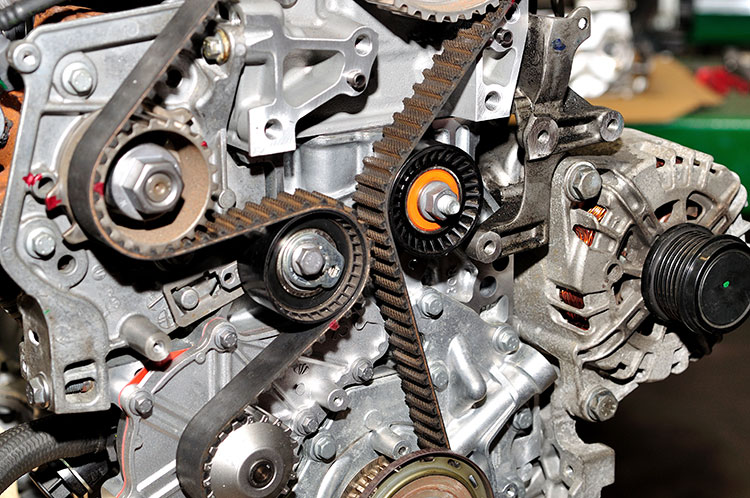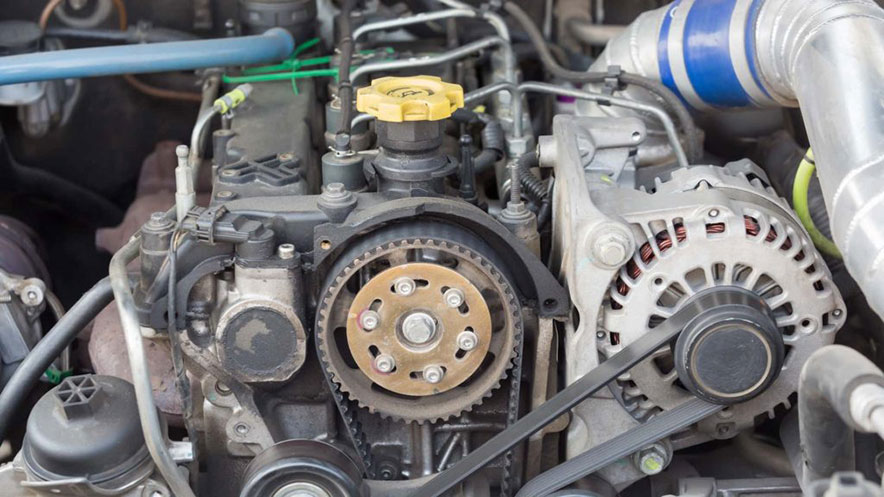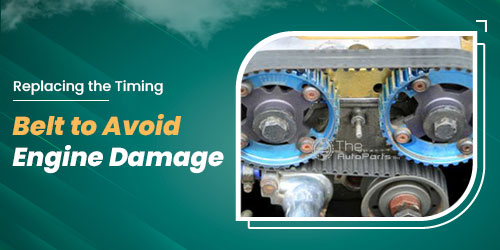The timing belt is one of the car components that undergoes wear and tear. Behind the smooth working of the engine lies the efforts of the belt, and issues with the belt entirely halts the car. This problem becomes so worse that the need for engine replacement arises that burns a hole in your pocket. Therefore, replacing the timing belt as recommended by the manufacturer would save you a lot of money.
What is Timing Belt & Its Function?

The belt is also known as a timing chain or cam belt and helps the camshaft in turning. Synchronous movements of the engine moves between camshaft and crankshaft has only been possible due to the belt. The linear energy is converted into rotational energy, and wheel changing takes place using a crankshaft. In addition, the entry and exit of air and gas within the engine takes place due to the camshaft. As the belt breaks, the working of these two components halt and leads to engine damage later on.
When is the Right Time for Timing Belt Replacement?
The manufacturer mentions the interval in the owner’s manual regarding the timing belt replacement routine. Replacements are generally recommended when the car has covered anywhere between 60,000 to 100,000 miles. Changing the belt after 4 to 6 years is advised even if you haven’t surpassed the mileage threshold. Usage and age are the two factors that impact the performance of the timing belt. Make sure that you finalize a timing belt replacement before the manufacturer declares it as due.
Besides the replacement job, the technician would also recommend idler and tensioner replacement to keep the belt intact. Any loose or worn-out part leads to complete failure of the timing belt after it has been installed. The idler, tensioner, or sometimes the entire belt needs to be replaced during the process.
Timing belt damage would damage other car components like a water pump. Getting the timing belt and water pump replacement together would save your effort later on. Don’t forget to keep the timing belt replacement cost in mind before purchasing it for your car.
How Much Does Timing Belt Replacement Cost?

Cost is a significant aspect that must be considered before investing in a timing belt. The average timing belt replacement cost generally falls between $300-$500.The cost would escalate to heavy trucks, SUVs, and big cars. Labor costs are charged separately, and expect you to pay $50.
How to Save Money From Timing Belt Replacement?
Timing belt replacements carried out by the mechanic can be costly. However, you can save money by carrying out timing belt replacement by yourself. Watch the DIY videos and purchase the timing belt from the customer’s preferred car parts and accessories online store ‘The Auto Parts Shop,’ bringing authentic and reasonable timing belts to you. The best thing about the store is the parts are delivered within a day.
Step by Step Timing Belt Replacement Process
During the timing belt replacement, the old belt is taken out, and a new belt is installed in its place. Here is the step by step timing belt replacement process that must be implemented to help your car run smoothly:
Check the manual for safety procedures.
1. Apply emergency brakes when required jack up the car using jack stands take out the negative battery terminal.
2.Ensure that the transmission is in the neutral state take out all the spark plugs.
3. Eliminate plastic sheets beneath the engine take out the coolant.
4. Take out the cooling fan and plastic fan covering present at the engine’s front.
5. Take the cooling hose out and mark them so that installing doesn’t become a hassle.
6. Separate the radiator from the vehicle eliminate the cap and rotor.
7. Remove the water pump pulley.
8. Remove the bolts keeping the upper timing belt cover in place.
9. Place a socket between the crankshaft pulley. Rotate engine to top dead center (TDC), ensure that the first piston is the inline engine. Check the mark that shows TDC on both engine and pulley.
10. Loosen the crankshaft pulley bolts. Take out the crankshaft pulley with a vibration damper.
11. Take the lower timing belt cover outside.
12. Mention the location of the main tensioner bolt.
13. Take out the bolt that holds the tensioner and timing belt cover.
14. Separate the main adjustment bolt for the tensioner.
15. Remove the freed tensioner with a tensioner spring.
16. The belt comes out as the tensioner disables.
Attaching New Timing Belts
1. Adjust the engine to top dead center so that marking the confirmation timing doesn’t become a hassle
2. Place the timing belt and tensioner inside the car and ensure that the timing marks are aligned appropriately.
3. Adjust the tension of the new belt ensure that the timing marks are adjusted appropriately reverse the steps mentioned above, and the process of timing belt adjustment is complete.
Things to Consider Before Buying a Timing Belt
1. Take extra caution while buying the timing belt. Length, width, and profile should exactly be similar to the existing one.
2. Try not to stretch or force the belt; instead, wiggle it over a pulley, and it will start working.
3. Ensure that the manual is referred for the right material
Ensure that significant parameters such as cost and quality are duly considered before buying a timing belt. Test drive the vehicle once the timing belt has been installed within it.
The Bottom Line
Timing belt issues prevent the engine from working. Ensure that timing belt replacement is carried out when the issue arises.
